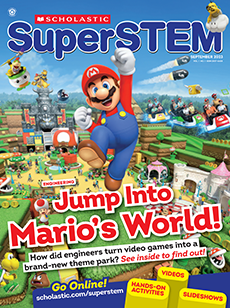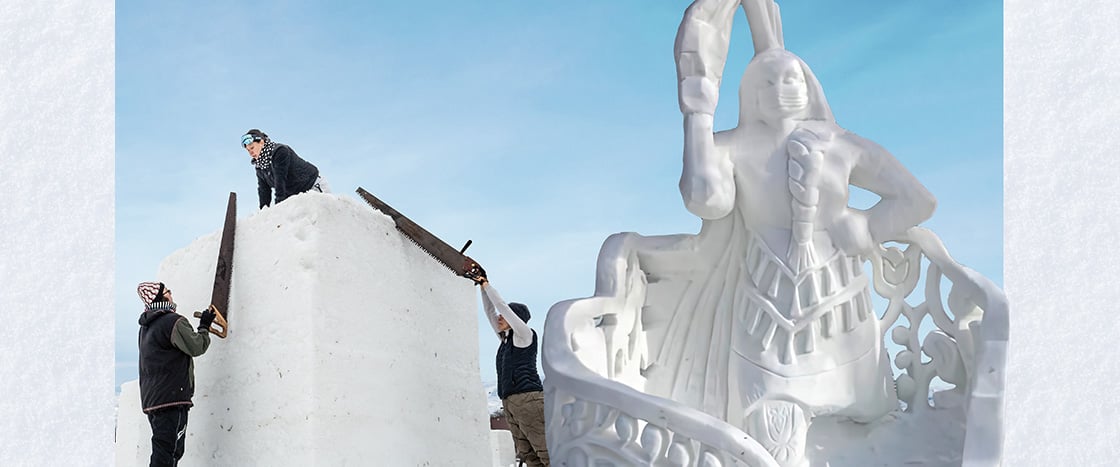On a frosty field in Minnesota, a huge cube of snow towers over three sculptors. They anxiously wait for the competition to start. Their fingers are eager to grasp the tools spread out before them—saws, axes, and chisels. They’ll use them to shape their snow cube into a work of art.
Together, Heather Friedli, Juliana Welter, and Maggie Thompson are a snow sculpting team called Team Kwe (kuh-way). Other teams of snow sculptors stand in front of their own cubes. Everyone’s nervous breaths puff into the frigid air.
Suddenly, a horn blares! The artists grab their tools and start sculpting. Each team will spend the next 56 hours carving. Some teams will even work through the night! Their goal is to transform their giant block into a magnificent snow figure.
For Team Kwe, the final sculpture is more than a piece of art. It’s a link to their past and a way to honor their heritage.
It’s a frosty day in Minnesota. Three sculptors stand in a field. A huge cube of snow towers over them. They’re waiting for the contest to start. Saws, axes, and chisels are spread before them. They’re eager to grab the tools. They’ll use them to shape their snow cube. They’ll turn it into a work of art.
The sculptors are Heather Friedli, Juliana Welter, and Maggie Thompson. They’re a snow sculpting group called Team Kwe (kuh-way). Other teams stand in front of their own cubes. Everyone is nervous. Their breaths puff into the cold air.
A horn blares! The artists pick up their tools. They start sculpting. Each team will spend the next 56 hours carving. Some teams will work all night! Their goal is to turn their giant block into an amazing snow figure.
The final sculpture is more than a piece of art for Team Kwe. It’s a link to their past. And it’s a way to honor their heritage.

